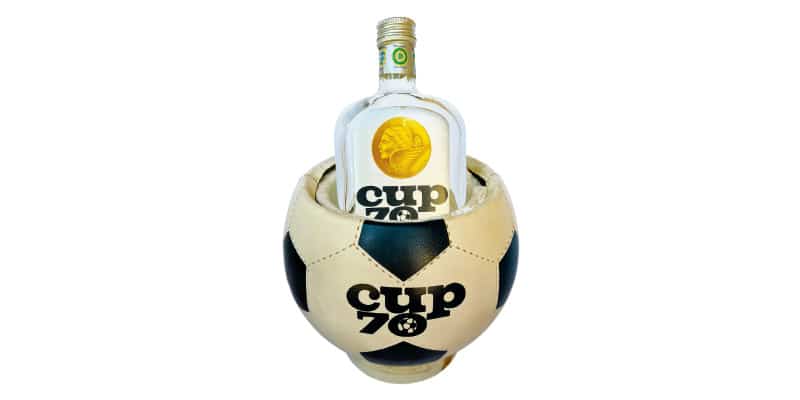
A football memento with a hidden secret received as a promotional gift serves as a reminder of family bonds and glimpses into the world of the press box
By Günther Simmermacher
26 December 2022
In the long history of football, the white ball with 12 black pentagons was standard for only about a decade, and for two World Cups, in the 1970s. For many it still serves as an emblem of the sport. I regard the Tango ball, introduced for the 1978 World Cup, as a new-fangled innovation, and the modern colourful plastic balls as better suitable for display in a net amid other toy balls in a seaside shop.
The black-and-white ball is a symbol of my childhood in northern Germany. I became an instant fanatic at the age of eight, when I saw the 1974 World Cup group game between the Netherlands and Uruguay. By the time West Germany beat the Dutch in the final, I was studying all I could about football. That evening my mother and siblings went on our annual holiday, for convenience’s sake located only 150 kilometres from our home. My father, Emil, joined us the next evening, having attended the World Cup final in Munich from the press box.
As the editor of a weekly sports newspaper, Emil knew all the players I now hero-worshipped, and was good friends with coach Helmut Schön. I have a batch of photos of Emil with Schön and several German football legends. In one of them, goalkeeper Sepp Maier helps the stewards by clearing Emil’s tray on a flight to Germany. Other players posing with Emil included Gerd Müller and Uwe Seeler, two strikers whose goals knocked England out of the 1970 World Cup.
At the age of eight, the Mexico tournament was half a lifetime ago for me. I studied the photos, and regretted that I was too young to know about World Cups. The 1966 final, which Emil also covered, seemed to me prehistoric, because of the brown ball that was used. At least Mexico had the real thing.
And it is a facsimile of such a ball that is displayed in our home, which must have been given to my father as a promotional gift. Affixed to a grey plastic base, the ball has a fake-leather covering and sports the legend “Cup 70”. The novelty is that the upper part of the ball is a lid. Open it and you’ll find a bottle of Korn, the clear grain spirit Germans like to drink chilled as a shot between beers. The three-sided bottle fits snugly into a casing of styrofoam. In short, the football is a Schnapps cooler. The bottle, also marked “Cup 70”, features the Roman goddess Victoria on the label, and a band around its neck with the badges of previous World Cup winners. There is still a fifth of the liquor in the bottle; it has no flavour left.
The thing is more a novelty item than a collectible. The hinge of the lid is broken, and on the base there is a glue mark onto which a sticker saying “Coolkeeper” had once been affixed. My wife doesn’t exactly love the thing. But it must be displayed.
This ball represents my love of football, of course. But more than that, it represents the one thing that bonded my father and me before he died at 54 in 1977, when I was 11. When I was nine, my father, his mentor and predecessor as editor, and I went to Hamburg for a Bundesliga game. On the way Emil quizzed me about football trivia. I knew all the answers. “The boy knows more about football than me,” my father said. I quite agreed with his judgment, even as I knew that he was joking.
A year earlier, in September 1974, he had taken me to my first Bundesliga game, Hamburg SV v VfB Stuttgart. Before the game we walked on the pitch and met some players then watched from the press box, and afterwards went to the press conference. Somehow I was allowed to sit among the hacks. I’m a journalist myself now, and I like to claim that I attended my first presser at the age of eight – and it’s not a lie.
I’m sad to know that I couldn’t talk to my father about football when I really got to know something about it. The Cup 70 ball is a reminder of what was and what might have been. In 2023 my brother, sisters and I will mark the centenary of our father’s birth. We shall cheer him by raising a glass of Korn in his honour.
This article first appeared in WSC 427, January 2023. Subscribers get free access to the complete WSC digital archive
Want to see your writing published in WSC? Take a look at our pitching guide and get in touch
Tags: 1970 World Cup, Object Lesson
